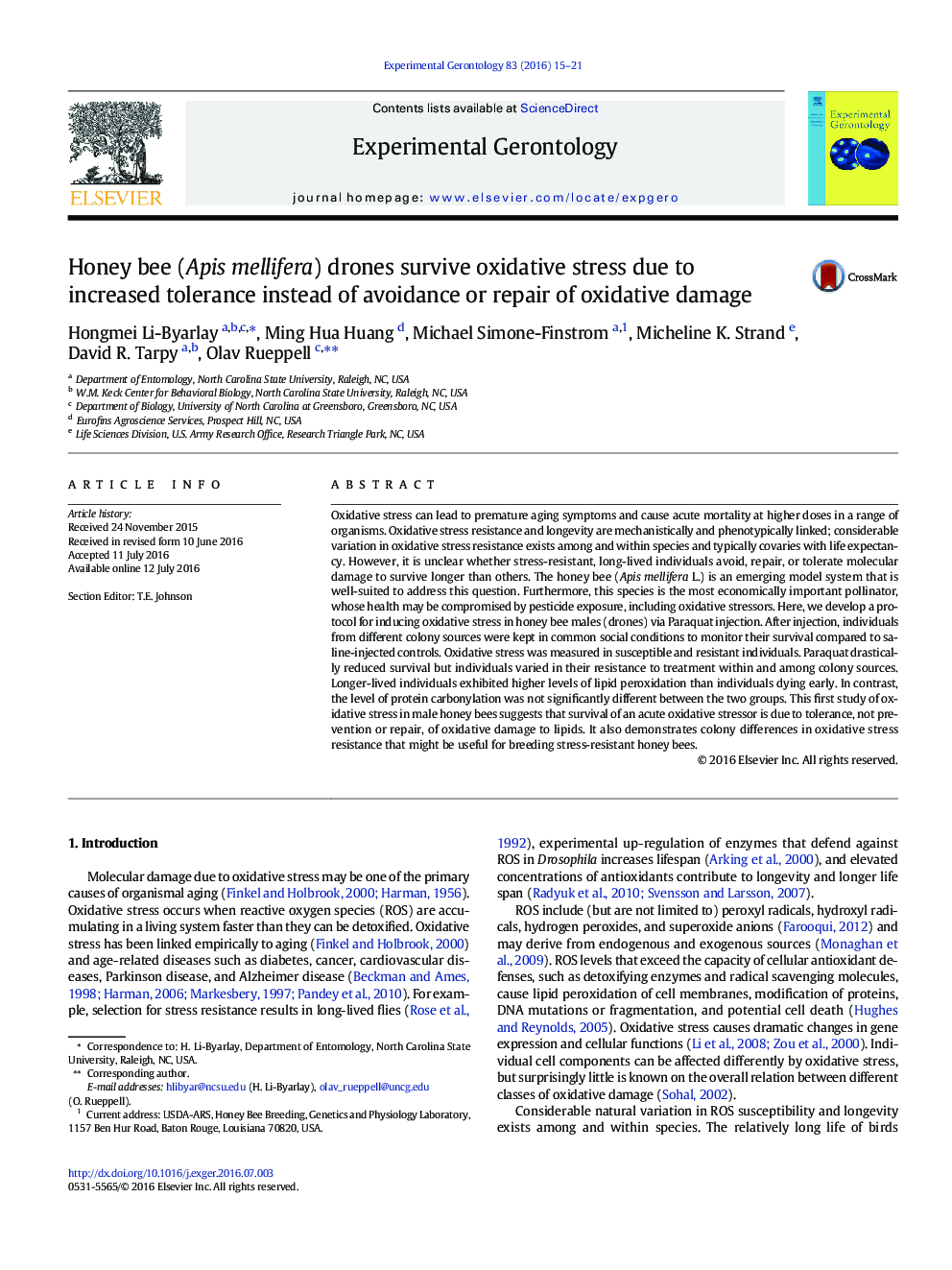| کد مقاله | کد نشریه | سال انتشار | مقاله انگلیسی | نسخه تمام متن |
|---|---|---|---|---|
| 1906086 | 1534858 | 2016 | 7 صفحه PDF | دانلود رایگان |
• First study of oxidative stress in male honey bees suggesting a tolerance mechanism
• Paraquat drastically reduced survival but individuals varied in their resistance.
• Longer-lived individuals exhibited higher levels of lipid peroxidation.
• Colony differences in oxidative stress resistance might be useful for breeding.
Oxidative stress can lead to premature aging symptoms and cause acute mortality at higher doses in a range of organisms. Oxidative stress resistance and longevity are mechanistically and phenotypically linked; considerable variation in oxidative stress resistance exists among and within species and typically covaries with life expectancy. However, it is unclear whether stress-resistant, long-lived individuals avoid, repair, or tolerate molecular damage to survive longer than others. The honey bee (Apis mellifera L.) is an emerging model system that is well-suited to address this question. Furthermore, this species is the most economically important pollinator, whose health may be compromised by pesticide exposure, including oxidative stressors. Here, we develop a protocol for inducing oxidative stress in honey bee males (drones) via Paraquat injection. After injection, individuals from different colony sources were kept in common social conditions to monitor their survival compared to saline-injected controls. Oxidative stress was measured in susceptible and resistant individuals. Paraquat drastically reduced survival but individuals varied in their resistance to treatment within and among colony sources. Longer-lived individuals exhibited higher levels of lipid peroxidation than individuals dying early. In contrast, the level of protein carbonylation was not significantly different between the two groups. This first study of oxidative stress in male honey bees suggests that survival of an acute oxidative stressor is due to tolerance, not prevention or repair, of oxidative damage to lipids. It also demonstrates colony differences in oxidative stress resistance that might be useful for breeding stress-resistant honey bees.
Journal: Experimental Gerontology - Volume 83, October 2016, Pages 15–21
